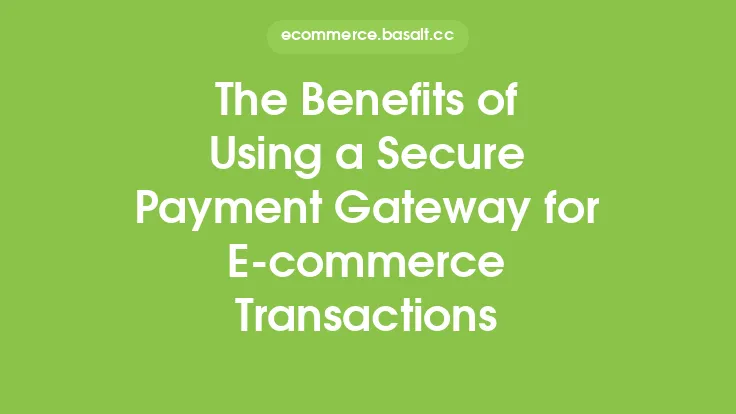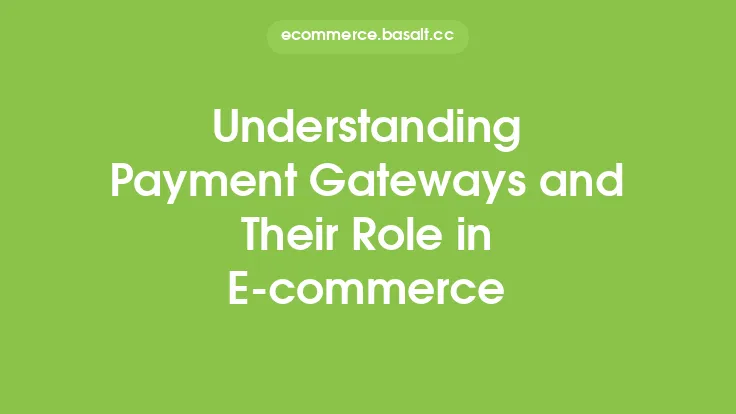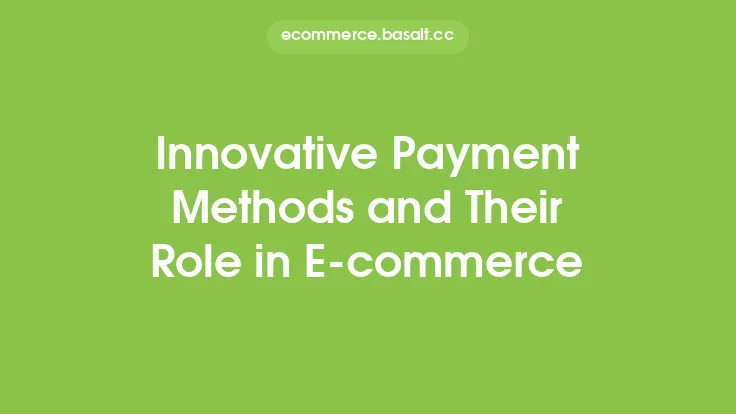The rise of e-commerce has led to an increase in online transactions, making it essential to ensure the security of sensitive payment information. One effective way to achieve this is through payment tokenization, a process that replaces sensitive payment data with a unique token or reference number. This token is then used to facilitate transactions, eliminating the need to store or transmit actual payment information. In this article, we will delve into the world of payment tokenization, exploring its benefits, how it works, and its significance in enhancing security in e-commerce transactions.
What is Payment Tokenization?
Payment tokenization is a security technology that replaces sensitive payment information, such as credit card numbers, with a unique token or reference number. This token is then used to facilitate transactions, making it impossible for hackers to access the actual payment data. The tokenization process involves the substitution of sensitive payment data with a token, which is then stored in a secure environment, such as a token vault. When a transaction is initiated, the token is used to retrieve the original payment information, allowing the transaction to be processed without exposing the sensitive data.
How Does Payment Tokenization Work?
The payment tokenization process involves several steps. First, a customer initiates a transaction by entering their payment information, such as a credit card number. The payment information is then sent to a tokenization server, which replaces the sensitive data with a unique token. The token is then stored in a secure token vault, while the original payment information is stored in a separate, secure environment. When a subsequent transaction is initiated, the token is used to retrieve the original payment information, allowing the transaction to be processed without exposing the sensitive data. The tokenization process can be performed by a payment gateway, a merchant, or a third-party tokenization service.
Benefits of Payment Tokenization
Payment tokenization offers several benefits, including enhanced security, reduced PCI compliance scope, and improved customer experience. By replacing sensitive payment information with a token, payment tokenization reduces the risk of data breaches and cyber attacks. Additionally, payment tokenization reduces the scope of PCI compliance, as the sensitive payment data is not stored or transmitted by the merchant. This reduces the burden of PCI compliance and minimizes the risk of non-compliance. Payment tokenization also improves the customer experience, as customers do not need to re-enter their payment information for subsequent transactions.
Types of Payment Tokenization
There are several types of payment tokenization, including payment card industry (PCI) tokenization, payment gateway tokenization, and merchant tokenization. PCI tokenization involves the replacement of sensitive payment information with a token, in accordance with PCI standards. Payment gateway tokenization involves the use of a payment gateway to perform the tokenization process, while merchant tokenization involves the use of a merchant's own tokenization system. Each type of tokenization has its own benefits and drawbacks, and the choice of tokenization type depends on the specific needs of the merchant.
Implementing Payment Tokenization
Implementing payment tokenization requires several steps, including selecting a tokenization service, integrating the tokenization service with the payment gateway, and testing the tokenization process. Merchants can choose from a variety of tokenization services, including payment gateways, third-party tokenization services, and in-house tokenization systems. The tokenization service must be integrated with the payment gateway, to ensure seamless processing of transactions. The tokenization process must also be tested, to ensure that it is working correctly and securely.
Security Considerations
Payment tokenization is a secure technology, but it is not foolproof. Merchants must take several security considerations into account, including the security of the token vault, the security of the payment gateway, and the security of the merchant's own systems. The token vault must be secure, to prevent unauthorized access to the tokens. The payment gateway must also be secure, to prevent unauthorized access to the payment information. Additionally, the merchant's own systems must be secure, to prevent unauthorized access to the payment information.
Best Practices for Payment Tokenization
To ensure the secure and effective use of payment tokenization, merchants must follow several best practices, including using a secure tokenization service, regularly testing the tokenization process, and ensuring compliance with PCI standards. Merchants must choose a secure tokenization service, that meets PCI standards and has a proven track record of security. The tokenization process must be regularly tested, to ensure that it is working correctly and securely. Additionally, merchants must ensure compliance with PCI standards, to minimize the risk of non-compliance.
Conclusion
Payment tokenization is a powerful technology that enhances security in e-commerce transactions. By replacing sensitive payment information with a unique token, payment tokenization reduces the risk of data breaches and cyber attacks. Merchants can implement payment tokenization by selecting a tokenization service, integrating the tokenization service with the payment gateway, and testing the tokenization process. To ensure the secure and effective use of payment tokenization, merchants must follow several best practices, including using a secure tokenization service, regularly testing the tokenization process, and ensuring compliance with PCI standards. By following these best practices, merchants can ensure the secure and effective use of payment tokenization, and provide a safe and secure shopping experience for their customers.





